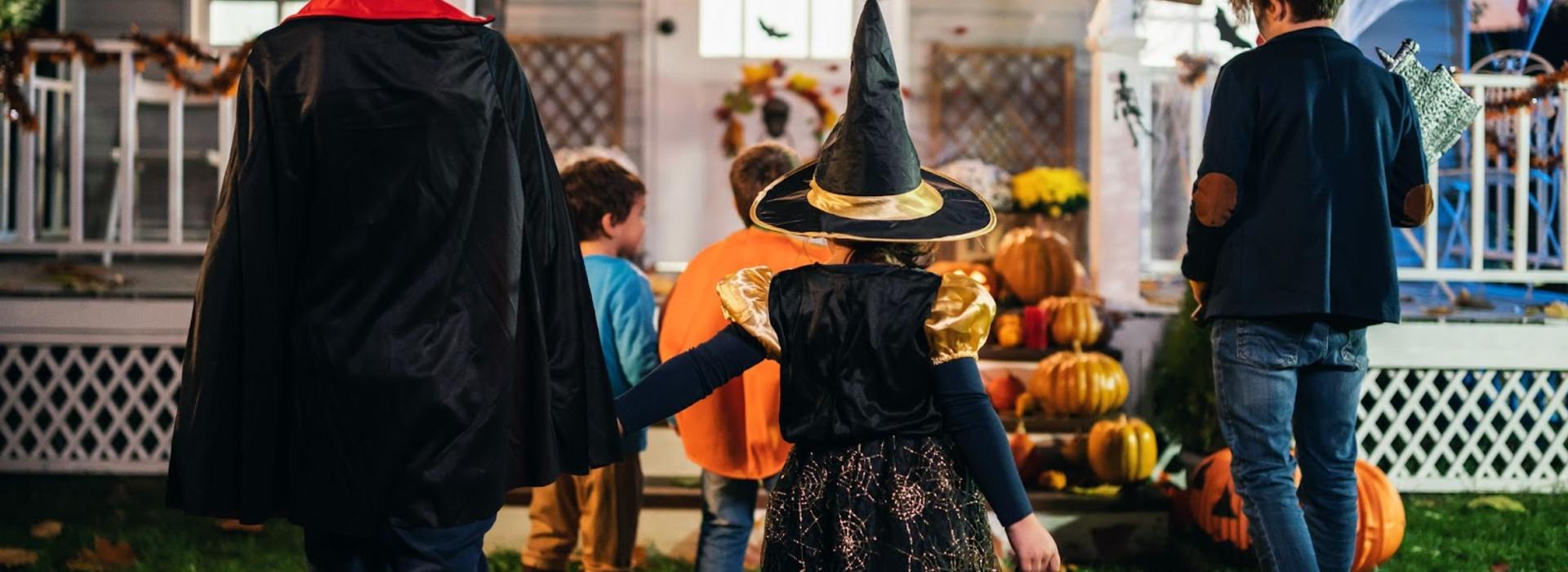
Talking Halloween safety with U of M
MINNEAPOLIS/ST. PAUL (10/24/2023) — As Halloween approaches, it’s important to strike a balance between spooky fun and safety.
James Miner, MD, with the University of Minnesota Medical School and Hennepin County Medical Center, provides valuable insights and practical tips to ensure a memorable and safe Halloween celebration for all.
Q: Why do we see an uptick in emergency room visits on Halloween?
Dr. Miner: The increase is primarily due to alcohol-related incidents. Halloween often involves drinking, especially among young adults. Another factor is the unique rush hour activity of dressing up and walking around in costumes when it’s getting dark, which isn't typical on regular days. This makes things a bit less safe, so we must be extra careful on Halloween because we're doing things that aren't part of our normal routine.
Q: What are the most common Halloween-related injuries?
Dr. Miner: The most common Halloween injuries are typically related to drinking or, separately, car accidents and driving behaviors.
When people put on costumes, they might act differently and drink more than usual. This can be dangerous. Normally, if you have a couple of drinks in a calm setting, it feels safe. But in a costume at a big party, things can get risky.
Car accidents are also a big concern. During Halloween, there's a rush to get home from work, and lots of people are on the road making plans and looking at their phones. This increases the chances of accidents.
Q: What precautions can families with young children take while trick-or-treating?
Dr. Miner: Be extra careful when trick-or-treating with young kids. More people might be drinking and more cars are on the road. Refrain from assuming cars will stop for you when you're crossing the street. If you're in a crosswalk, wait until passing cars completely stop moving.
Kids in costumes may act differently and be less responsive to directions. Keep a close eye on them. Add reflective material to their costumes so they're easier to see in the dark. Dress warmly to combat the potentially chilly weather.
If you have a driveway fire for ambiance, always supervise it to prevent accidents, even if you don't have kids at home.
Q: What safety considerations should people keep in mind while picking out their costumes?
Dr. Miner: Some costumes limit vision, which can be unsafe, especially outdoors. In closed events, it's more of a distraction. For trick-or-treating, be cautious. Dark costumes should have reflective tape. Also, watch out for costumes that might cause you to trip. Fancy costumes can lead to accidents due to restricted movement and vision.
Q: How does the U of M support people who need medical attention on Halloween?
Dr. Miner: With more than 2,000 clinical training partnerships statewide, U of M trained physicians are in clinics, hospitals and emergency departments throughout Minnesota, providing high quality care for Minnesotans 365 days a year. Those who unfortunately find that they need medical care on holidays, including Halloween, often end up getting care in Emergency Departments from U of M trained doctors, nurses and pharmacists who provide high quality, state-of-the-art care.
James Miner, MD, is the head of the Department of Emergency Medicine at the University of Minnesota Medical School and chair of emergency medicine at Hennepin County Medical Center. Dr. Miner conducts research in the areas of pain management, procedural sedation, altered mental status, shock and monitoring during critical care in the emergency department.
-30-
About “Talking...with U of M”
“Talking...with U of M” is a resource whereby University of Minnesota faculty answer questions on current and other topics of general interest. Feel free to republish this content. If you would like to schedule an interview with the faculty member or have topics you’d like the University of Minnesota to explore for future “Talking...with U of M,” please contact University of Minnesota Public Relations at unews@umn.edu.
About the University of Minnesota Medical School
The University of Minnesota Medical School is at the forefront of learning and discovery, transforming medical care and educating the next generation of physicians. Our graduates and faculty produce high-impact biomedical research and advance the practice of medicine. Visit med.umn.edu to learn how the University of Minnesota is innovating all aspects of medicine.